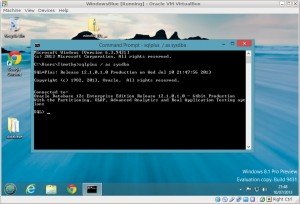I shouldn’t really need to write this post, but recent events seem to indicate it is necessary…
Oracle Database 12c is new! The people out there writing articles can be broken down into three basic groups:
- Those people who have been using the beta product for over a year and really pushing it hard.
- Those people who have dabbled a little with the beta product, giving them enough knowledge to write some articles.
- Those people, like me, who got their first sniff of 12c when it was released a couple of weeks ago and are now on a steep learning curve.
Regardless of which group people belong to, we all got the final production release at about the same time. It is quite common for features to be pulled from the beta product and for minor API changes to take place, so even those on the beta program might have some re-learning to do.
So why write this post?
Well, I get the distinct impression, based on the questions I’m being asked, that people feel I’m in some way able to help them with 12c issues. I am categorically not a 12c guru! After two weeks of using the product I can safely say I know bugger all about it. Yes I’ve installed it a few times. Yes I’m trying to learn about it, but asking me for advice at this time is a bit like the blind leading the blind.
That’s not to say I’m not willing to try, but people have to be realistic. If you ask me about pluggable databases today my answer is going to be, “I dunno!”. Even after I release an article on it, I will have a fairly sketchy understanding of it until the wider implications of it start to sink in. Suffice to say, if you can’t find a 12c article on a subject on my website, it probably means I’ve not looked at it yet. 🙂
Over the coming months I will be writing a lot about 12c. I will make a lot of mistakes. I will go back and extend or rewrite articles as my knowledge improves. If you find mistakes, which you will, please tell me and I’ll endeavour to correct them. This is very much a learning process for me. It’s about my own personal development. If you find the articles that get produced during this process useful, that’s great. If you don’t, I’m sorry, but this is not about you!
OK. Back to learning new stuff… 🙂
Cheers
Tim…
